This Middle Eastern staple is well worth the negligible effort to make at home

These scarcely leavened eats, known to us by their Israeli name, but common throughout the Arab world, are some of the most ancient in existence. Although flat in appearance, they are designed to puff up during baking and then sag, creating a hollow interior that makes a handy repository for crowds. Quick to attain, and easy to ingest, its little think theyre favourite, in various forms, from southern Europe to north Africa , is not merely for substance, but likewise as utensils for dipping or scooping meat, and bulking out soups and salads.
Sealed in long-life parcel, pitta is to be able to picked up at most supermarkets for merely pennies so why rile to establish your own? Because, unless youre lucky enough to be able to find them freshly roasted, shop-bought pitta is a very poor relation, just like pizza cornerstones, or indeed hummus. The real thing is soft and chewy, rather than tough, with a fluffy interior perfect for soaking up sauces theyre well worth the pretty negligible effort.
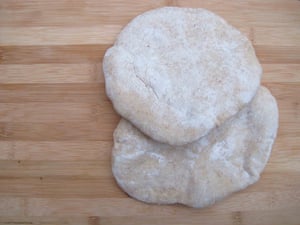
The flour
Most pitta recipes call for white-hot flour, and generally of the high-protein, strong motley, although Yvonne Ruperti on the US-based Serious Eats website helps plain flour, both lily-white and wholemeal, explaining that using 20% wholewheat flour[ acquires] the dough much more flavourful and screwy than one obligated with merely all-purpose flour, while also not accommodation its structure.
Pitta is a bread that depends on gluten development for its distinctive structure; without it, the dough will not be strong enough to puff up in the oven, producing a simple flatbread, rather than one with a pocket.( Pitta breads get their characteristic shape from a combination of hot and moisture. When the thin round of dough goes into the oven, the heat specifies the top and foot while turning the fluid in the dough into steam, which is then captured between these seams of cooked lettuce, inducing the eat to expand. Though it will rapidly collapse when removed from the heat, the pocket inside remains intact .)
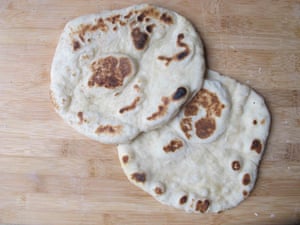
Most of Rupertis doughs do rise( and fall ), but I find the dough necessary more initial kneading, and that the outcome scarcity the chewiness of some of the others. Belatedly, I realise that the American all-purpose flour she refers to tends to be harder than our own, so the distinction between strong and plain flour over there will be less observed. In all such cases, British readers are best advised to splash out on food flour.
The flavour and slightly nubbly quality that the wholemeal flour commits the dough is popular with testers, although as Ruperti mentions, this doesnt induce gluten as easily as its grey counterpart, so its best used in moderation. Strong wholemeal is principle, but in such small amounts, plateau will likewise do if thats what you have to handwriting. If you prefer a smoother, paler pitta, change the wholewheat with more white-hot flour.
The fat
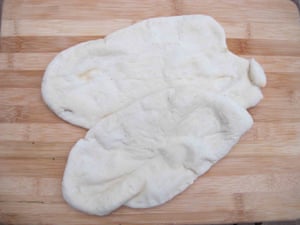
It is certainly possible to oblige pitta without any fat at all, although why you would want to is beyond me; not only does it add flavour, but it keeps the dough fresher for longer. Tom and Henry Herbert use rapeseed oil in their journal The Fabulous Baker Brothers, and Belinda Harleys Roast Lamb in the Olive Groves proceeds for butter instead, both of which handiwork just fine texturally, but the former sacrifices the bread a rich smell that employs me more in thought of naan, while the second is boringly neutral. Grassy and quintessentially Mediterranean, olive feels like the natural choice.
Sarit Packer and Itamar Srulovichs recipe in the Honey& Co cookbook, which several people recommend to me as the only one I should try, contributes the fatty toward the end of the kneading process. Although their pittas are luscious, its clearly harder to incorporate the petroleum at this object, and I would be interested to know the reason behind it; some research suggests that not lending it at the beginning encourages gluten shaping in the dough. If anyone can confirm this, I would be grateful, but I dont find it makes a significant difference, so Im going to stick with the easier method.
Seasoning
You dont have to look very far to find recipes for flavoured pitta( garlic and thyme, for example, or black onion seed ), but I dont believe these little eats require any help in that department. That said, its common to add sugar to kickstart the action of the yeast, and although a pinch would be sufficient, having the same sum as salt returns the foods a more well-rounded smell: add too much, as Ruperti does, and they lose the plainness that is their foreman goodnes; add too little, or none at all as the Herberts do, and theyre a bit underwhelming.
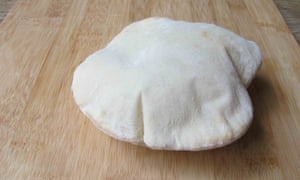
The method
Pitta dough must be sufficiently hydrated to generate steam where reference is congregates the heat of the oven, and strong enough to net this steam, and thus puff up, so the concoction must be both reasonably soggy and well-kneaded. Dont be invited to flour the piece skin-deep unless the dough is so sticky as to be completely unmanageable; it will come together eventually and, in the meantime, a palette spear or dough scraper will stimulate life easier. If you have a food mixer, then by all means use that; excavations currently on the blink.
Packer and Srulovich recommend remaining the dough overnight “if youre having” the time, as it helps the smell develop and manufactures the pitta fluffier, and theyre right; if homemade pittas are perceptibly more luscious than shop-bought ones, slow-risen ones are even better.
Even if you cant wait that long, do make private individuals breads remainder before determining; exactly 10 instants acquires the process much easier. The Herberts recommend reeling it out in one tack only, but this is another fiddly pace I cant see the reasoning behind as with the oil, if somebody knows why, please explain.
However you roll them out, make sure they are thin enough to puff up in the short time they take to cook, and evenly so, very, or they will blister in places, rather than blowing up like a balloon. Ruperti, who find a bent for the pitta to end up with a much thinner meridian than freighter after it comes out of the oven, suggests flip-flop the eats over before putting them in the oven, so the pocket of air that rises during the final proofing stagecoach is at the bottom when the dough enters the oven.
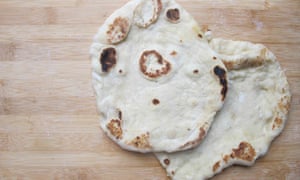
The cooking
Like most doughs, pittas are traditionally cooked at temperatures that can be difficult to replicate at home. Packer and Srulovich advise cranking your oven up to maximum, on the love preparing if possible, and heating a baking tray or stone along with it, to give the foods the most wonderful start possible and foster the creation of steam.
Although the oven is certainly the best cooking option for pitta, as the heat from both top and bottom helps to set the dough quickly, its not the only one; Rebecca Seals book The Islands of Greece causes an excellent recipe use a frying pan. Harley likewise exploits this method, which she recommends topping with a thick-skulled tomato sauce and crisp brown cubes of pork or lamb, a spoonful of thick tzatziki[ and] some raw onion and tomato( pitta porn alert ). The interior pockets are less dependable, but its much quicker if youre in a hurry, or its simply too hot to swap the oven on.
Ruperti proposes finishing off the eats in a hot wash to give them that luscious charred flavour that can be hard to achieve in a domestic oven Not simply do the pittas appear a little better that behavior, but the scorch includes a layer of smoky smell. Shes right, but it isnt traditional( Packer and Srulovich remind that they are not supposed to colour much) and it will crisp up the outsides of the bread, doing them less pliant and amenable to cram. For me, it depends on what Ill be feeing them with. Plainer satisfyings, such as hummus or salad, cry out for a little char, while barbecued fleshes or veggies dont needed most. The jury is out on my current favourite fill, however: Marmite and banana. In my defense, Ive had an horrific fortune of pitta to put away this week.

( makes 10 )
400ml warm but not hot water
10g active dehydrated yeast
2 tsp sugar
400g strong lily-white flour
100g wholemeal flour( optional, or use 500 g white)
2 tsp salt
2 tbsp olive oil, plus additional to grease
Put 100 ml heated irrigate in a jar and scoot in the yeast and half the carbohydrate. Leave until the surface is described in foam. Meanwhile, mix the flours, standing sugar and salt in a large mixing bowl.
Mix the oil and yeasty water in the flour with your fingertips, then lend just enough of the remaining water to give you a shaggy dough it should be soft, but not too sticky( mention if youre exploiting all grey flour, it probably wont require as much as a wholemeal/ lily-white mixture ). Turn out on to a clean piece skin-deep and rub for about 10 minutes( or about 8 in a food mixer on a low-pitched accelerate) until smooth and elastic. Give into an oiled bowl, turn to coating in lubricant, then cros and chill overnight, or leave somewhere warmish until redoubled in sizing( about an hour to an hour and a half ).
Heat the oven to maximum, preferably fan, with a broiling stone or heavy baking tray in there. Meanwhile, divide the dough into approximately 80 g balls, plow with a damp tea towel and allow to rest for 10 minutes, then roll out on a floured surface to rounds about 0.5 mm thick-skulled, preparing sure they are evenly thick-skulled all over. Cover with a damp tea towel and leave for 20 minutes.
Operating as soon as possible, set as numerous pitta as will comfortably fit on the hot stone or broiling tray while its still in the oven, flip-flop them over as you pick them up, so the side resting on the task face is now on top. Cook until they balloon, then carefully remove and keep warm in a tea towel while you cook the remainder( how long this takes is dependent upon how red-hot your oven goes ). Make sure to keep the oven door shut as far as is possible to conserve heat. Eat the same day, or freeze.
Pitta, pide, khubz which form of this very versatile flatbread is your favourite, and how do you like to eat it? And has anyone had any success baking it with other flours ?

